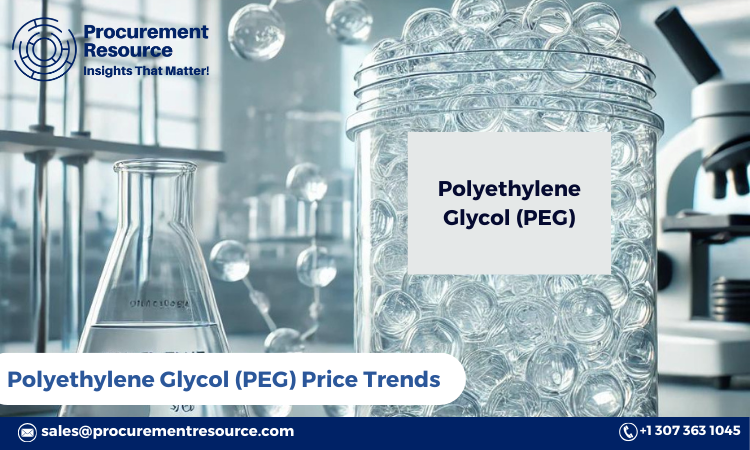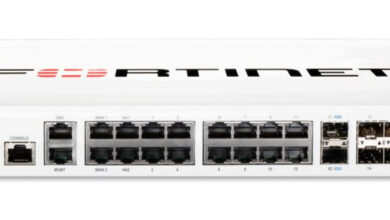
Polyethylene Glycol (PEG) is a versatile polymer widely used in pharmaceuticals, cosmetics, food, and industrial applications. Due to its excellent solubility, non-toxicity, and biodegradability, PEG has gained significant traction in various industries. Understanding the price trend of PEG is crucial for manufacturers, suppliers, and buyers to anticipate market shifts and plan strategically. In this report, we explore the historical, current, and forecasted price trends of Polyethylene Glycol.
1. Forecast Report
The global market for Polyethylene Glycol is anticipated to experience steady growth in the coming years, with rising demand from pharmaceutical, personal care, and food industries driving its price trends. According to market forecasts, the price of PEG is expected to witness moderate volatility, influenced by raw material prices, supply-demand dynamics, and global economic conditions.
The average global price of Polyethylene Glycol ranged between USD 1,800 and USD 2,200 per ton. Projections indicate that the price will rise at a CAGR of 4% through 2024-2030, with potential fluctuations driven by changes in crude oil prices, which significantly impact the cost of ethylene, the primary raw material for PEG production.
Request For Sample: https://www.procurementresource.com/resource-center/polyethylene-glycol-price-trends/pricerequest
2. Market Outlook
The outlook for the Polyethylene Glycol market appears positive, supported by the increasing demand in several sectors, especially pharmaceuticals. PEG’s role as an excipient in drug formulations, laxatives, and ointments will be a key factor boosting its consumption. The expansion of the cosmetics and personal care industry, particularly in emerging economies, is expected to further drive PEG demand.
Moreover, the food industry’s utilization of PEG as an additive and stabilizer is likely to grow, enhancing its market outlook. However, the reliance on ethylene as a raw material makes the PEG market susceptible to fluctuations in crude oil prices and potential disruptions in supply chains.
3. Market Dynamics
- Raw Material Prices: Ethylene, derived from crude oil or natural gas, is the primary raw material for PEG production. Fluctuations in the price of crude oil, driven by geopolitical tensions, supply disruptions, or shifts in demand, directly impact the cost of PEG.
- Supply Chain Disruptions: Global supply chain disruptions caused by the COVID-19 pandemic and other unforeseen events have created logistical challenges for PEG production and distribution. Shortages of raw materials, coupled with transportation issues, have led to temporary price spikes.
- Growing Demand in Pharmaceuticals: The pharmaceutical industry’s increasing demand for PEG as an excipient in oral, topical, and injectable drugs has driven up prices. PEG’s use in laxatives and its importance in mRNA vaccine formulations further contribute to its market dynamics.
- Environmental Concerns: There is growing pressure on chemical companies to shift toward sustainable production methods. As a result, eco-friendly alternatives to PEG are being explored, potentially affecting long-term demand and prices.
4. Demand-Supply Analysis
Demand: The global demand for Polyethylene Glycol has been rising, driven by its applications in pharmaceuticals, cosmetics, and industrial processes. PEG’s use as a thickener, stabilizer, and moisture-retaining agent in personal care products has contributed significantly to demand growth.
- Pharmaceuticals: PEG’s role in drug formulation as a solvent, excipient, and laxative has spurred its use, particularly during the development of mRNA vaccines.
- Cosmetics: The growing personal care industry, particularly in regions like Asia-Pacific and North America, has fueled the demand for PEG in skincare, haircare, and oral care products.
Supply: On the supply side, major PEG manufacturers like BASF SE, Dow Chemical Company, and INEOS Oxide continue to increase production capacity to meet rising demand. However, supply-side constraints such as high production costs, environmental regulations, and volatile raw material prices may cause short-term disruptions.
5. Extensive Forecast
Looking ahead, the Polyethylene Glycol market is expected to grow steadily, albeit with potential price volatility due to the following factors:
- Increased Pharmaceutical Demand: As pharmaceutical companies continue to rely on PEG for drug formulations, especially for biologics and vaccines, its demand will remain robust, potentially pushing prices upwards.
- Sustainability Push: With increasing environmental concerns, manufacturers may need to invest in greener alternatives to traditional ethylene-based PEG. This could lead to higher production costs in the short term, impacting overall pricing.
- Raw Material Volatility: The price of ethylene is highly dependent on crude oil prices, which are subject to global economic conditions and geopolitical events. This could lead to sporadic price increases in the PEG market.
- Technological Advancements: Innovations in PEG production, such as the development of bio-based PEG, could shift market dynamics, influencing both demand and pricing.
6. Detailed Insights
Regional Price Trends:
- North America: In North America, the price of PEG has remained stable, ranging between USD 1,900 and USD 2,100 per ton, with growth driven by high pharmaceutical demand.
- Europe: European prices hovered around USD 1,800 to USD 2,000 per ton. However, stringent regulations regarding chemical production and the rising adoption of green alternatives are expected to create moderate price increases in the region.
- Asia-Pacific: Asia-Pacific remains one of the fastest-growing markets for PEG, with prices fluctuating between USD 1,700 and USD 2,100 per ton. Rapid industrialization, coupled with growing pharmaceutical and cosmetic sectors in countries like China and India, are key drivers in the region.
Industry Growth Drivers:
- Pharmaceutical Applications: PEG’s role in the formulation of medications, especially its use in vaccines, is expected to drive the demand significantly.
- Cosmetic & Personal Care Industry: The rising consumption of PEG-based skincare, haircare, and hygiene products will continue to boost market growth.
- Food Industry: PEG’s use as a food additive in the form of emulsifiers and stabilizers is also set to expand, particularly in processed food products.
The price trend of Polyethylene Glycol is expected to remain positive in the coming years, driven by its extensive applications in the pharmaceutical, cosmetic, and food industries. However, the volatility in raw material prices, potential supply chain disruptions, and environmental regulations may lead to price fluctuations. Staying informed about these factors will be crucial for stakeholders in the PEG market to make strategic decisions.
Contact Us:
Company Name: Procurement Resource
Contact Person: Endru Smith
Email: sales@procurementresource.com
Toll-Free Number: USA & Canada - Phone no: +1 307 363 1045 | UK - Phone no: +44 7537 132103 | Asia-Pacific (APAC) - Phone no: +91 1203185500
Address: 30 North Gould Street, Sheridan, WY 82801, USA
Website: https://www.procurementresource.com/





